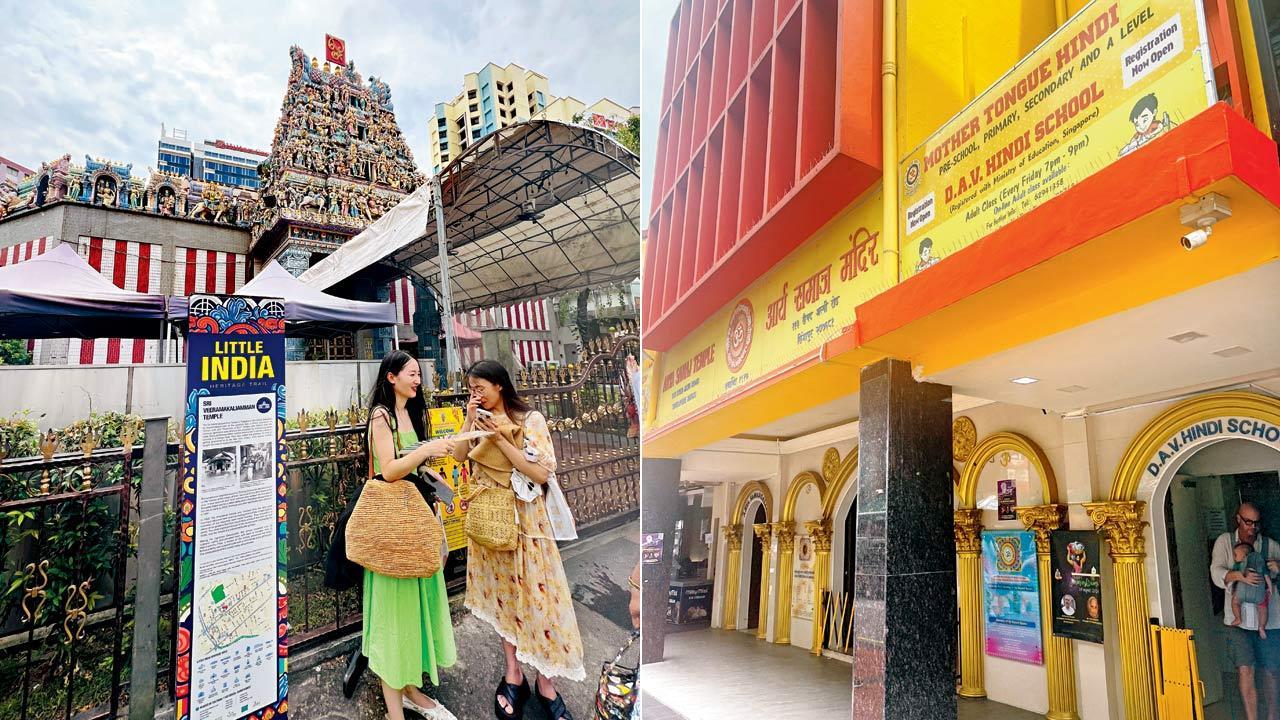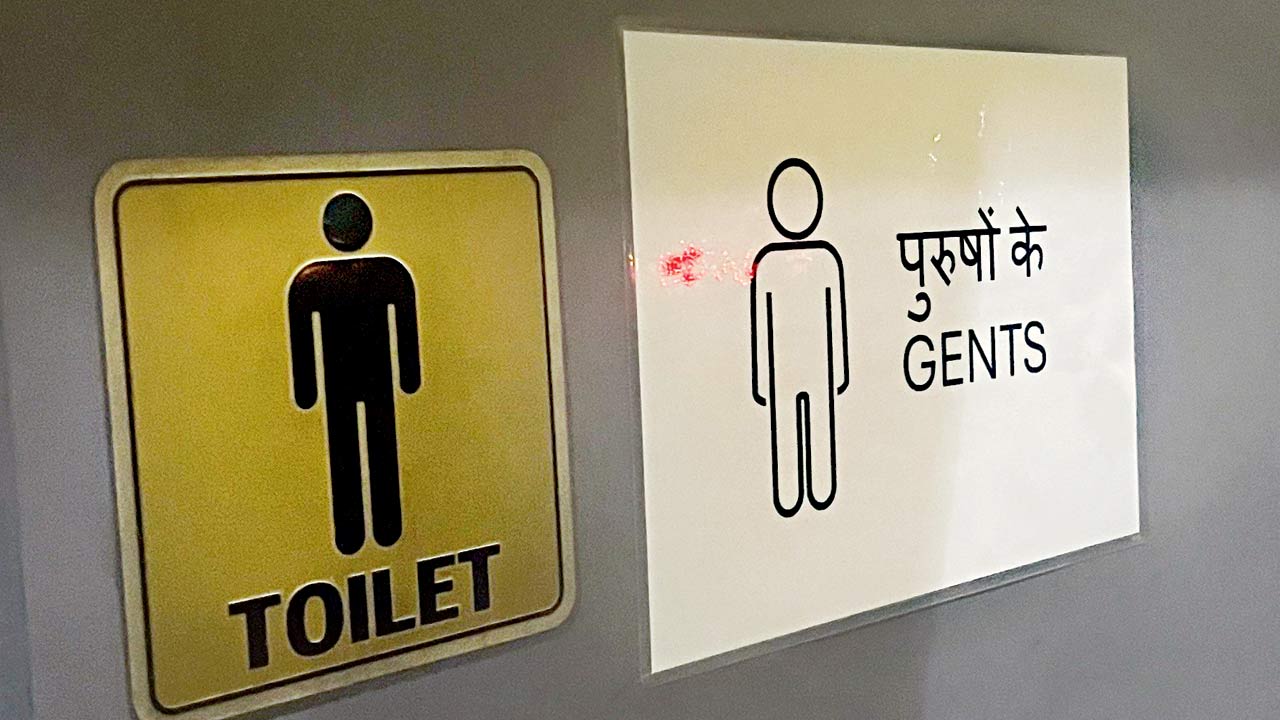Hung out in the ‘Matunga’ of Singapore to figure out how the desis here are different from desis everywhere

The Little India neighbourhood in Singapore
 As per legend, Sang Nila Utama, the Sanskrit-speaking prince of Srivijayan empire, was sailing past a relatively barren island in the mid-1200s.
As per legend, Sang Nila Utama, the Sanskrit-speaking prince of Srivijayan empire, was sailing past a relatively barren island in the mid-1200s.
He thought he spotted a lion, and therefore named these flatlands, Singh-Pur, or Lion City. That’s how we now know Singapore.
ADVERTISEMENT
No, there are no elephants in Denmark—there are no lions in Singapore, either. Let alone half-lion, half-fish, mythical Merlion. Which is the Asian ‘tiger’ economy’s official symbol!
“[Such scars from an ancient hallucination] is why drug-ban is so strongly enforced in Singapore,” my friend Jacob jokes, as we dig into super-authentic Mallu lunch at Swaadhisht restaurant, in Little India neighbourhood!
For all political censorship, surely, you’re allowed to joke about drugs?
 Signage of public toilet in Hindi
Signage of public toilet in Hindi
Or maybe not—for a city-state that hangs you until death, I’m told, if found with even eight grams of cocaine! Lesser quantities of marijuana send you straight to prison. Genesis of this paranoia lies in Singapore’s history of substance-abuse.
Right from the early 1900s, when the British were the region’s drug-dealers—peddling opium to China; growing it in Bengal; processing it in Singapore. Latter became opium den, with drug-problem of its own.
No such clampdown on alcohol, though. Unless, you’re in Little India! It’s the “liquor control zone”— you can’t drink, in public, between 10.30 pm and 7 am, Monday-Friday; 7 am to 7 pm, Saturday-Monday; 7 am to 7 am, before/after public holidays…
Oh. Why? Because drunk desis caused a riot, around Race Course Road, on December 8, 2013. Fellow construction worker, one Sakthivel Kumarvaelu, 33, from Tamil Nadu, literally got thrown under a bus—the same one he’d been thrown out of, for being intoxicated.
He died instantly that rainy night. What ensued is known as the Little India Riots. First such, in four decades, for Singapore, whose residents, foremost, take pride in the “safety” the city-state promises, and provides—take any poll.
And rightly so. Even when you barely see cops on streets. They’re known to suddenly emerge, before you sense something shady. CCTVs ensure this.
Little India Riots, Singapore’s deepest, recent scar, lasted hardly a couple of hours. Investigations followed. Offenders fixed. Communal angles of any sort consciously avoided.
Riots starred desi labourers, with work permits, on a rampage. They’re called migrants. As against (rich) expats—whom they subsidise, apart from wealthy citizens. Ayahs/domestic-helps are still relatively affordable in Singapore. This is rarest for a First World megapolis.
I watch this lower-deck desi population collectively descend on Little India, on their Sunday off. Many of them, I’m told, are adorably out on dates—shopping, eating jalebis, jaywalking, jostling on packed streets….
Making Serangoon Road look quite distinct from the rest of Singapore—that could pass for a smooth-sailing, sanitised Lego-land, instead.
Yes, I can see a mandir, not far from a masjid. Quite typical of big Indian neighbourhoods. Mustafa Centre is, however, the main temple.
As in a four-level, 24x7, desi, budget shopping centre that, I’m told, began as make-shift carts, also selling food items, including ice-cream.
Because the owners, originally from India, had to pay for electricity/refrigeration, for dairy/bread/ice creams, throughout the night, anyway—they decided to keep the shop open as well!
The current supermarket, on Syed Alvi Road, swiftly expanded sideways, taking over all other shops. It’s essentially Delhi’s Sarojini/Lajpat Nagar; only AC/indoors.
Well, there’s a Little India in practically every megapolis in the world. Only the one in Singapore is explicitly named so. Like a Chinatown.
It began with desi cattle farmers/traders, working with Europeans. Area stopped being conducive for this business. Europeans left. Indians stayed on.
What separates this Little India from similarly crowded, colourful, West London’s Southall, or Jackson Heights in Queens, NYC?
Firstly, that it’s not an Indian neighbourhood!
About 80 per cent of Singapore lives in government-subsidised skyscrapers. Each home is allotted in proportion to ethnic population.
Hence, 75 per cent of Little India is Chinese-origin. Many of whom, I’m told, having grown up in Little India, have taken to Indian classical music/dance, gold jewellery, the works.
This is apart from ‘Chindians’, of mixed parentage, in Singapore. Such as the Singapore-Chinese hero of the comedy show, Asian Billionaires (shitty version of Schitt’s Creek) that I just slept-watched. This popular star’s name is Gurmit Singh!
This is as per Singapore’s modernist founder Lee Kuan Yew’s desire to build an inclusive, multi-culti city-state, investing wholly on human resources—whether local or imported.
Indians comprise 9 per cent of Singapore. As in citizens, with the world’s strongest passport, who can enter both China and the US, without a visa!
Many first came over to service the imperial Brits. Some opened lucrative businesses, such as the Tamil Chettiars, back in early 1800s.
India’s engagement, apparently, even dates to Chola Dynasty’s reign in Singapore—once they defeated the Sanskrit-speaking Srivijayan empire, circa 1025. Dodgy-sounding details of this syllabus seems somewhat limited to WhatsApp University, though.
More recent Indians are expats/migrants, of course. English, as a central language, enforced by the state, unites all.
Which is why I find it strange to spot a public restroom sign in Little India—with Purush/Mahilayein in Hindi/Devnagri, written besides Male/Female in English, including their stick-figures, at the door!
What? Okay, that’s for Indian tourists! And no, you don’t take chances with the Indian tourist.
Anywhere. Ever.
Mayank Shekhar attempts to make sense of mass culture. He tweets @mayankw14
Send your feedback to mailbag@mid-day.com
The views expressed in this column are the individual’s and don’t represent those of the paper
 Subscribe today by clicking the link and stay updated with the latest news!" Click here!
Subscribe today by clicking the link and stay updated with the latest news!" Click here!







